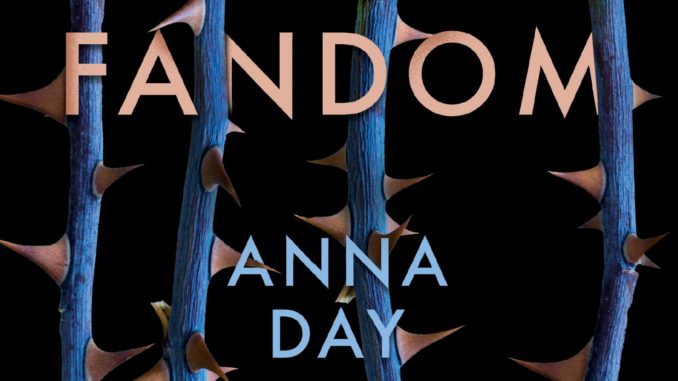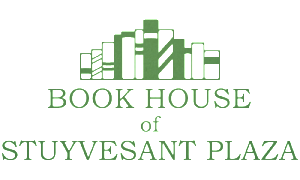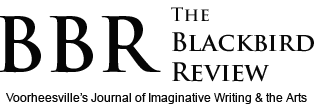
 As part of our ongoing collaboration with the Book House of Stuyvesant Plaza, our writers have accepted the challenge of reading and reviewing pre-publication review copies of highly anticipated young adult literature. The reviews are posted here for our readers, but also will be sent to the Book House where they will hopefully be used to inform customers about the books they may want to purchase.
As part of our ongoing collaboration with the Book House of Stuyvesant Plaza, our writers have accepted the challenge of reading and reviewing pre-publication review copies of highly anticipated young adult literature. The reviews are posted here for our readers, but also will be sent to the Book House where they will hopefully be used to inform customers about the books they may want to purchase.
The Fandom
by Anna Day
Published April 24, 2018
416 pages, Chicken House Books
The Fandom, by Anna Day, is a fictional book about a young teenager finding herself trapped in her own favorite fantasy franchise. Violet, who is seventeen years old, is obsessed with a franchise called The Gallows Dance, a fictional book and movie series modeled after The Hunger Games by Suzanne Collins. Violet, her brother Nate, and her two friends are visiting Comic Con, when they are all suddenly transported into the story of The Gallows Dance. The quote, “We’re not in cosplay anymore.” (33) marks the entrance into The Gallows Dance through a comedic reference to The Wizard of Oz. Violet is excited at first to be living her greatest fantasy by actually being in her favorite story, but eventually she realizes that she is in a life or death situation and she has to be very clever in order to return home. Even though her brother becomes severely incapacitated, and her friends are also hurt in the process, Violet eventually wins their freedom by completing the story. They then all return home and Nate starts to feel better after visiting a doctor.
The author attempts to incorporate the life of a teenager into a novel ripe with references to famous stories. Anna Day adds a theme of adolescence by demonstrating usual teenager behavior, such as anxiety, and including typical teenage diction. A good example of anxiety being displayed by Violet is the quote, “Is it because my breath smells? Is my hair too messy? Is it because I went off-script and talked about the decontamination process? Maybe I’m just not good enough.” (176). This quote depicts a classic teenager stereotype, a feeling of insecurity stemming from anxiety. A good example of teenage, or immature, diction being used in the novel is the quote, “’You didn’t dribble and fart and pick your nose, did you? Because I warned you against that look.’” (178). This crude language excellently displays a theme of adolescence because it demonstrates a connection with the characters and teenagers who may be reading the novel. By using teenager stereotypes, the author clearly demonstrates a theme of the mental and emotional immaturity brought on by adolescence.
With nods to incredibly famous stories such as Rumpelstiltskin, Cinderella, The Wizard of Oz, and The Hunger Games, the novel frequently references different stories in order to display a theme of storytelling. With references to historic stories such as Frankenstein and Shakespeare’s works, references to relatively recent stories such as Star Wars, and references to completely modern stories such as The Big Bang Theory. A good example of one of these references is the quote, “He’s fourteen, but he looks about twelve and he sometimes talks like Sheldon Cooper from The Big Bang Theory.” (15). The author uses references such as this in order to portray a theme of storytelling. A reference to a modern story like The Big Bang Theory could also benefit the novel by adding relevancy to the novel. This added relevancy could mean more popularity for the book and is thus a very smart way for the author to use a major theme in order to gain popularity for her novel. Violet herself is shown to be a great proponent of storytelling by her fascination in The Gallows Dance. Violet’s enthusiasm for The Gallows Dance shows her interest in storytelling, and is an attempt to advocate for the reader to also display interest in storytelling because it is very fun and entertaining.
Despite the undoubtedly superfluous clichés and the vulgar vocabulary used by many of the characters, I think that the book is very interesting. Each reference to a popular story built a humorous aspect to the novel. I think that the author’s aim or intent was to give teenagers a relatable and quirky book that they would find very interesting. I feel that this goal was accomplished because the book is very relatable and engaging to teenagers, but this may lead to the book’s downfall. The target audience of the novel is a specific subculture of a specific age group, teenagers who like to watch popular movies or television and read popular books. Many teenagers have different tastes when it comes to their interests in different stories, and a geeky remodel of The Hunger Games may not seem palatable to them. Since the intended audience is so specific and small, the book may not be very popular. I think the subject of the book is entertainment because not only are an incredible number of stories mentioned in the book, but the plot of the book revolves around a game where the main characters are trapped in and are forced to fight for their lives just for the entertainment of the wealthy. I think this subject is very interesting because it applies to the real world to an extent. Many people are performing, trying their hardest to earn a living, through entertaining others, and those others are usually wealthy or at least middle class and have enough time and money to spend on going to watch an expensive play or sporting event. While this subject is interesting, in the book it is grossly exaggerated as the teens are literally killing each other in order to give pleasure to the wealthiest of the citizens. Overall, I would say that this book was a success in portraying an interesting story, but it may have failed in the aspect of popularity because it was geared towards much too specific of an audience. The story was very relatable and interesting to the intended audience, but if the intended audience was broadened then the book would be much more successful. The parallels to the real world are very interesting to think about, and attribute to much of the success of the book. In conclusion, the major themes of adolescence and storytelling attempt to relate the book to the lives of many teenagers, but this may hinder the success of the book because of its much too specific intended audience.
